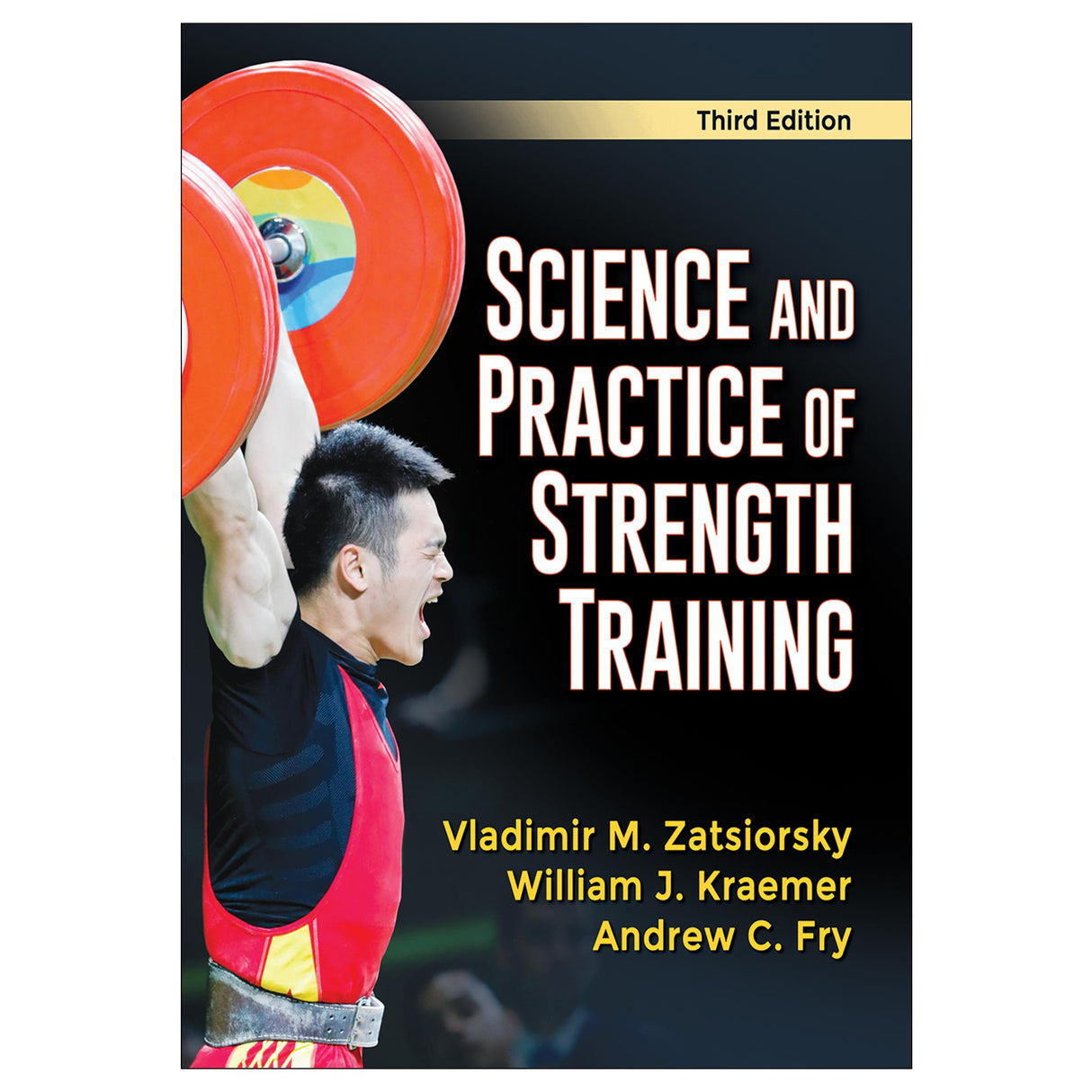Science and Practice of Strength Training 3rd Edition epub
$74.00 USD
Access Duration: 10 Years
Science and Practice of Strength Training, Third Edition, shows that there is no single program that works for everyone, at all times and in all conditions. It addresses the complexity of strength training programs while providing straightforward approaches to take under specific circumstances. Those approaches are backed with physiological concepts, ensuring readers gain a full understanding of the science behind the practice of strength training. In addition, the authors provide examples of strength training programs to demonstrate the principles and concepts they explain in the book. The third edition features more detailed artwork and has three new chapters on velocity in the weight room, overtraining and recovery, and athlete monitoring.
The book is divided into three parts. Part I focuses on the basis of strength training, detailing basic concepts, task-specific strength, and athlete-specific strength. Part II covers methods of strength training, delving into velocity training, training intensity, timing, exercises used for strength training, injury prevention, overtraining, athlete monitoring, and goal-specific strength training. Part III offers even more practical applications, exploring training for specific populations, including women, young athletes, and senior athletes. The book also includes suggested readings that can further aid readers in developing strength training programs.
This expanded and updated coverage of strength training concepts will ground readers in the understanding they need to develop appropriate strength training programs for each person that they work with.
Earn continuing education credits/units! A continuing education exam that uses this book is also available. It may be purchased separately or as part of a package that includes both the book and exam.
Audience
Reference for strength and conditioning professionals as well as researchers and exercise physiologists; course text for graduate-level students in strength and conditioning or exercise physiology courses.Chapter 1. Basic Concepts of Training Theory
Adaptation as a Main Law of Training
Generalized Theories of Training
Training Effects
Summary
Chapter 2. Task-Specific Strength
Elements of Strength
Determining Factors: Comparison Across Tasks
Summary
Chapter 3. Athlete-Specific Strength
Muscle Force Potential (Peripheral) Factors
Neural (Central) Factors
Taxonomy of Strength
Summary
Part II. Concepts of Strength Training
Chapter 4. Training Intensity
Measurement Techniques
Exercising With Different Resistance
Training Intensity of Elite Athletes
Optimal Training Intensities From Comparative Research
Methods of Strength Training
Summary
Chapter 5. Timing in Strength Training
Structural Units of Training
Short-Term Planning
Medium-Term Planning (Periodization)
Periodized Programming Models
Summary
Chapter 6. Exercises Used for Strength Training
Classification
Exercise Selection for Beginning Athletes
Exercise Selection for Qualified Athletes
Additional Types of Exercises Used for Strength Training
Experimental Methods of Strength Training
Breathing During Strength Training
Summary
Chapter 7. Velocity in the Weight Room
How to Measure Velocity
Considerations When Testing
Measuring High-Velocity Lifts in the Weight Room
Slow-Velocity Concentric Resistance Exercise
Slow-Velocity Eccentric Resistance Exercise
Velocity-Related Assessments in the Weight Room
Training Method Variations and Weight Room Velocity
Using Lifting Velocity to Determine Training Load and Volume
Summary
Chapter 8. Injury Prevention
Factors Contributing to Increased Injury Risks in the Weight Room
Training Rules to Avoid Injury
Lower Back Pain and Injury
Biomechanical Properties of Intervertebral Discs
Mechanical Load Affecting the Intervertebral Discs
Injury Prevention to the Lumbar Region
Summary
Chapter 9. Overreaching, Overtraining, and Recovery
Training Monotony and Variation
Types of Resistance Exercise
Psychology of Resistance Exercise Overtraining
Speed Is Very Sensitive
Lifting Power Decrements
Vertical Jump
Rate of Force Development
Strength Decrements
So Which Performance Tests?
Physiology of Resistance Exercise Overtraining
Sequence of Performance Impairments
Summary
Chapter 10. Monitoring Athletes in the Weight Room
Purpose of Testing
Who Is the Tester?
What Is Monitored?
Practical Considerations Related to Assessment
Monitoring Tests
Analyzing and Reporting Results
Summary
Chapter 11. Goal-Specific Strength Training
Developing a Profile of Target Goals
Evidence-Based Practice
Testing and Monitoring Progress
Strength Performance
Power Performance
Muscle Mass
Endurance Performance
Injury Prevention
Summary
Part III. Strength Training for Specific Populations
Chapter 12. Strength Training for Women
Coaching Style Is Important
The Need for Strength Training for Women in Sports
Benefits and Myths of Strength Training for Women
Trainable Characteristics of Muscle
Development of Lean Tissue Mass
Physiological Contrasts Between Women and Men
Strength Training Guidelines for Women Athletes
Incidence of Injury
Menstrual Cycle and Strength Training
The Female Athlete Triad
Summary
Chapter 13. Strength Training for Young Athletes
Safety and Strength Training for Young Athletes
Types of Musculoskeletal Injuries
Primary Factors in Avoiding Injury
When to Start
Benefits of Strength Training for Young Athletes
Myths of Strength Training for Children
Strength Training Guidelines for Young Athletes
Long-Term Athletic Development
Summary
Chapter 14. Strength Training for Senior Athletes
Age and Its Effects on Strength and Power
Training for Strength Gains
Training for Muscular Power
Nutrition, Aging, and Exercise Challenges
Recovery From Resistance Exercise
Strength Training and Bone Health
Strength Training Guidelines for Senior Athletes
Summary
Predicting 1RM strength with velocity-based training
What is overtraining?
All ancillaries are free to adopting instructors through HKPropel.
Test package. Contains a bank of questions in true-false, fill-in-the-blank, essay and short-answer, and multiple-choice formats.Image bank. Includes most of the figures and tables from the text, sorted by chapter. These can be used in developing a customized presentation based on specific course requirements.





